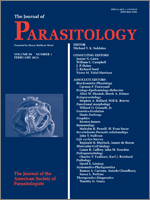Theilerioses and babesioses are important diseases in Iranian sheep. The present study was undertaken to identify and classify/specify Theileria spp. and Babesia spp. in sheep and vector ticks. Investigation was carried out from 2009 to 2011 in the Khorasan Razavi Province, Iran. In total, 302 sheep originating from 60 different flocks were clinically examined and their blood collected. In addition, from the same flocks, ixodid ticks were sampled. Stained blood smears were microscopically examined for the presence of Theileria and Babesia organisms, and a semi-nested PCR was used for subsequent molecular specification. From the ticks, salivary glands and uterus were isolated and subsequently analyzed by semi-nested PCR. Piroplasm organisms were observed in 29% of the blood smears with low parasitemia, whereas 65% of the blood samples yielded positive PCR findings. The presence of Theileria ovis (55.6%), Theileria lestoquardi, and mixed infection with Theileria spp. and Babesia ovis were detected by semi-nested PCR in 0.3%, 5.6%, and 0.99%, respectively. In total, 429 ixodid ticks were collected from different areas of the province. The most prevalent ticks were Rhipicephalus turanicus (n = 376; 87.6% of the total), followed by Hyalomma marginatum turanicum (n = 30; 7.0%), Dermacentor raskemensis (n = 12; 2.8%), Hyalomma anatolicum anatolicum (n = 7; 1.6%), Dermacentor marginatus (n = 2; 0.5%), Rhipicephalus bursa (n = 1; 0.2%), and Haemaphysalis sp. (n = 1; 0.2%). Of the positive R. turanicus samples, 5 (5.7%) were infected with T. ovis and 2 (2.9%) with T. lestoquardi. Neither Babesia ovis nor Babesia motasi infection was detected in salivary glands or uterine samples of the ticks. The results also suggest that R. turanicus could be the vector responsible for transmission of the 2 Theileria species.
How to translate text using browser tools
1 February 2013
Molecular Detection of Theileria Spp. and Babesia Spp. in Sheep and Ixodid Ticks from the Northeast of Iran
Gholamreza Razmi,
Moslem Pourhosseini,
Saeed Yaghfouri,
Ahmad Rashidi,
Mohsen Seidabadi
ACCESS THE FULL ARTICLE

Journal of Parasitology
Vol. 99 • No. 1
February 2013
Vol. 99 • No. 1
February 2013




